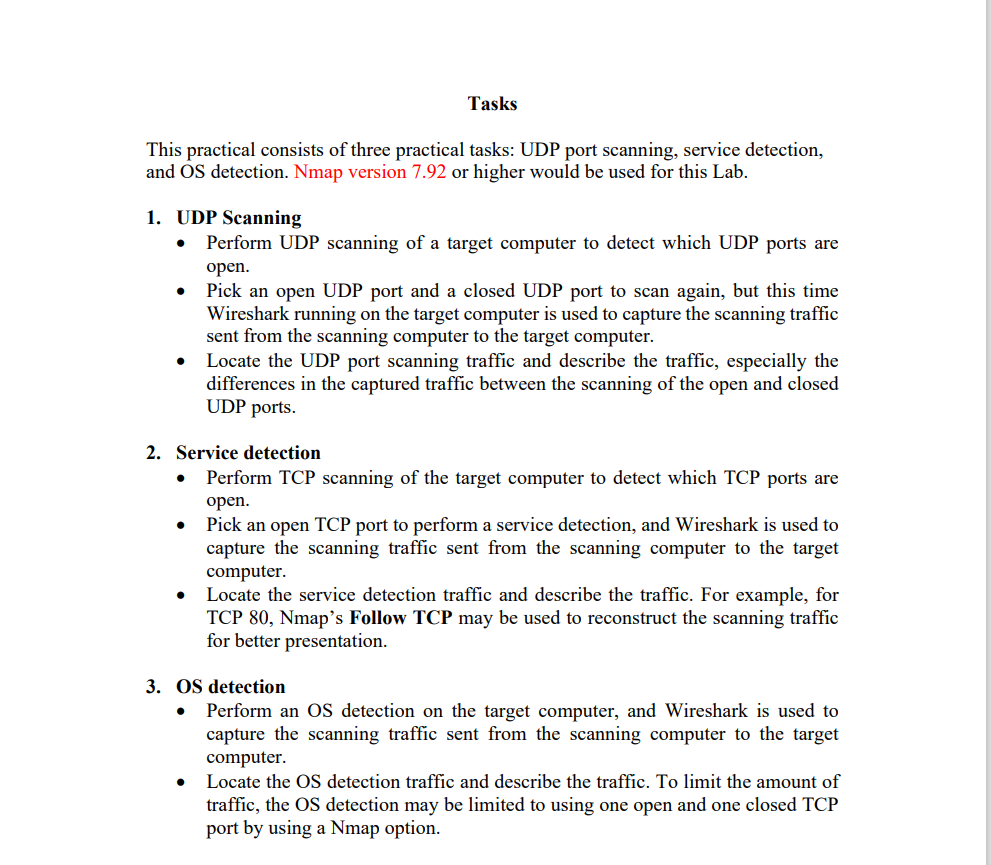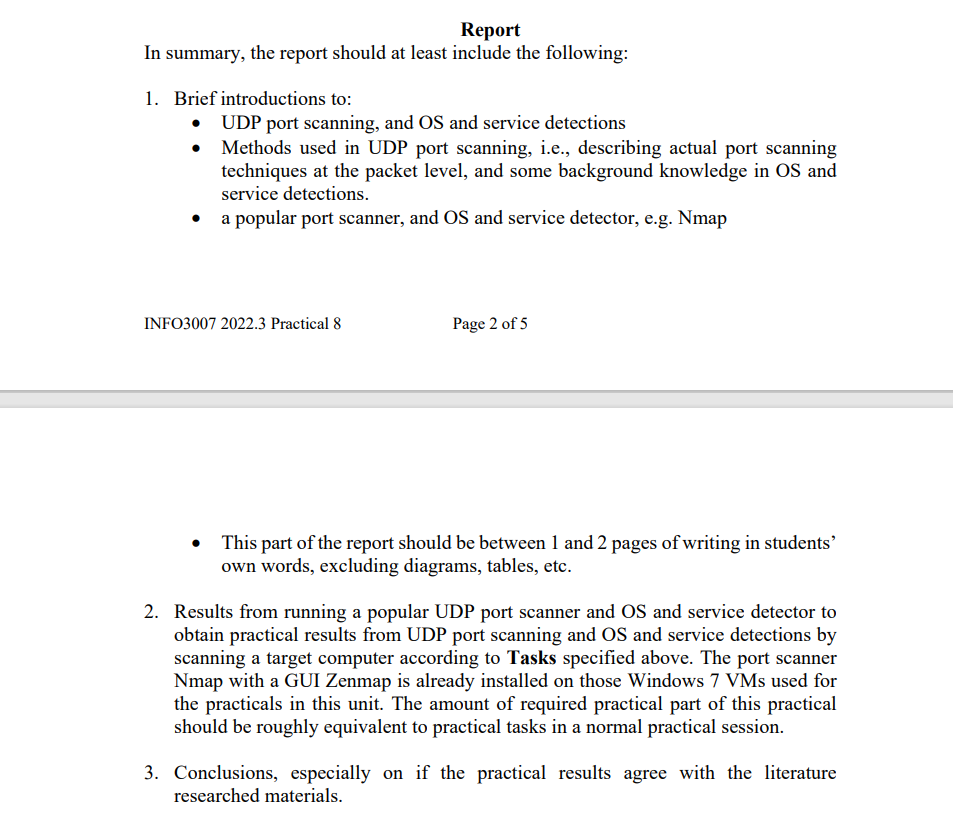

1. UDP Scanning - Perform UDP scanning of a target computer to detect which UDP ports are open. - Pick an open UDP port and a closed UDP port to scan again, but this time Wireshark running on the target computer is used to capture the scanning traffic sent from the scanning computer to the target computer. - Locate the UDP port scanning traffic and describe the traffic, especially the differences in the captured traffic between the scanning of the open and closed UDP ports. 2. Service detection - Perform TCP scanning of the target computer to detect which TCP ports are open. - Pick an open TCP port to perform a service detection, and Wireshark is used to capture the scanning traffic sent from the scanning computer to the target computer. - Locate the service detection traffic and describe the traffic. For example, for TCP 80, Nmap's Follow TCP may be used to reconstruct the scanning traffic for better presentation. 3. OS detection - Perform an OS detection on the target computer, and Wireshark is used to capture the scanning traffic sent from the scanning computer to the target computer. - Locate the OS detection traffic and describe the traffic. To limit the amount of traffic, the OS detection may be limited to using one open and one closed TCP port by using a Nmap option. Report In summary, the report should at least include the following: 1. Brief introductions to: - UDP port scanning, and OS and service detections - Methods used in UDP port scanning, i.e., describing actual port scanning techniques at the packet level, and some background knowledge in OS and service detections. - a popular port scanner, and OS and service detector, e.g. Nmap INFO3007 2022.3 Practical 8 Page 2 of 5 - This part of the report should be between 1 and 2 pages of writing in students' own words, excluding diagrams, tables, etc. 2. Results from running a popular UDP port scanner and OS and service detector to obtain practical results from UDP port scanning and OS and service detections by scanning a target computer according to Tasks specified above. The port scanner Nmap with a GUI Zenmap is already installed on those Windows 7 VMs used for the practicals in this unit. The amount of required practical part of this practical should be roughly equivalent to practical tasks in a normal practical session. 3. Conclusions, especially on if the practical results agree with the literature researched materials








